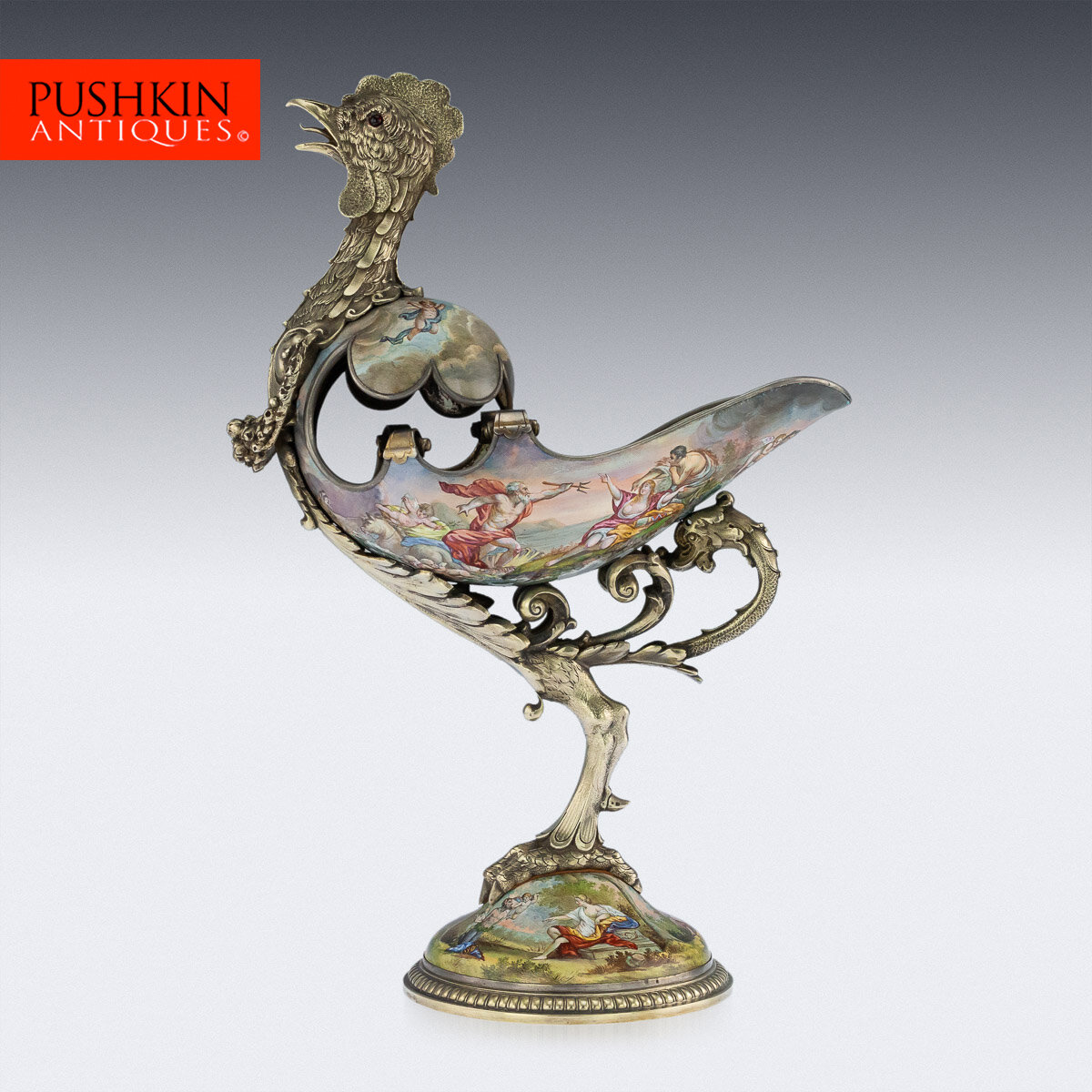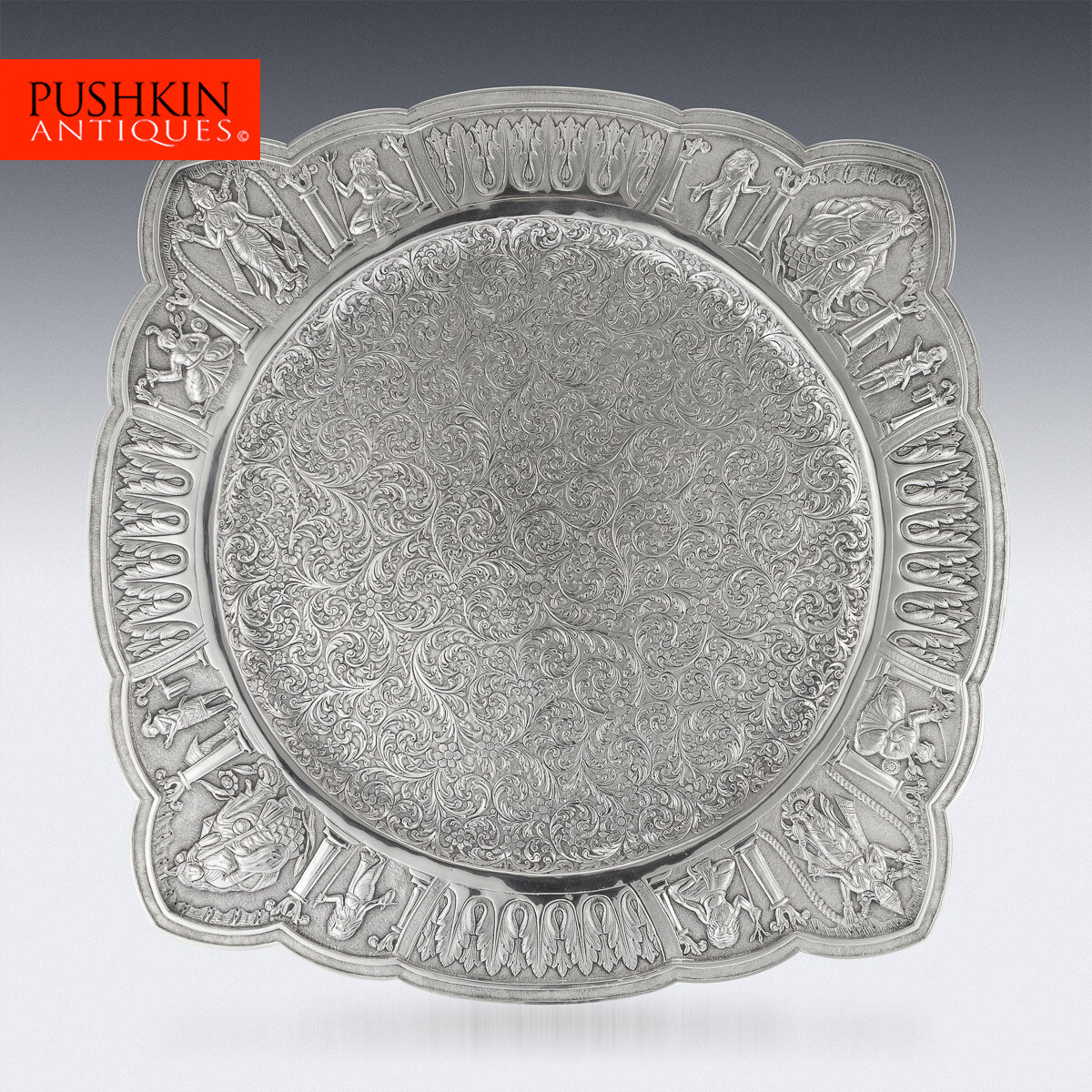RECENT ACQUISITIONS - 24th February, 2020
19th Century Austrian silver gilt and hand painted enamel cockerel shaped tazza, standing on a domed base, the hand painted enamel body standing on a large cockerel foot and terminating with a garnet set cockerels head.
Hallmarked Austro-Hungarian silver (letter "A" for Vienna), year 1880-90, Maker's mark "LP" for Ludwig Politzer.
Reference Number: C6274
19th Century Indian silver tea tray. Outstanding quality and very heavy gauge, the boarder is decorated with stylised Indian deities in arch shaped cartouche reserves, surrounded with large Madras style leaf boarders, the middle is densely engraved with floral and scroll decoration on matted ground.
Reference Number: A6169
20th Century Imperial Russian Faberge 56 gold novelty cufflinks, shaped as a pair of lapti, shoes made primarily from bast, fiber taken from the bark of trees such as linden or birch. They are a kind of basket, woven and fitted to the shape of a foot. Bast shoes are an obsolete traditional footwear of the forest areas of Northern Europe, formerly worn by poorer members of the Finnic people, Balts, Russians and Belarussians. The other ends of the chain with porridge spoons, porridge being a staple diet of the slavic people. The pair comes in a beautiful leather bound retailer's case stamped "Faberge, St-Petersburg & Moscow".
Hallmarked Russian gold 56 (585), St-Petersburg, year 1908/17, Maker's mark BC for Vladimir Soloview.
Reference Number: C6286
19th Century Thai Royal silver and enamel water-pot on stand, of traditional form, decorated throughout with stylized leaves, flowers, religious figures and deities on a dark blue enamelled ground. Enamelling technique do not originate in Thailand, the process was originally developed by the Chinese and was most likely introduced to Thailand by the Chinese silversmiths arriving in the 18 and 19th Century.
Reference Number: A6150




